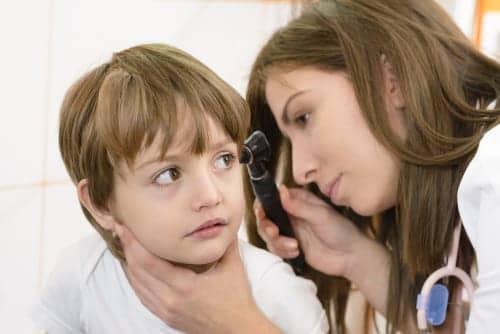It may be possible to predict the severity of hearing loss for children diagnosed with enlarged vestibular aqueduct, according to a new study published in JAMA-Otolaryngology-Head & Neck Surgery. This retrospective chart review, authored by physicians and researchers within the University Hospitals Rainbow Babies & Children’s Enlarged Vestibular Aqueduct (EVA) Research Project, is reportedly one of the first such studies to find a direct connection between the increasing width of the vestibular aqueduct and the degree of hearing loss a child experiences over time.
“There is still much to learn about the true causes and impacts of EVA,” said Mustafa Ascha, MS, first author of the study and a researcher within the UH Rainbow Department of Otolaryngology. “The hope is that these findings will help parents of young children with EVA, and their physicians, better understand what lies ahead for their child’s hearing and speech based on the severity of that child’s malformation.”
The study analyzed the medical records of 52 children diagnosed with EVA from the UH Rainbow Department of Otolaryngology, selecting records with both a computerized tomography (CT) scan for diagnosis and a median of five sets of audiogram test data to measure speech reception threshold, or the minimum intensity of decibels at which a patient can recognize half of spoken words, and the percent of words the patient recognized. The longitudinal models used in the study are common in social sciences such as economics or sociology, but applications in biomedical research are still gaining traction.
For each millimeter increase in vestibular aqueduct size greater than 1.5 millimeters, the research team found an increase of 17.5 dB in speech reception threshold and a decrease of 21% in word recognition scores. Additionally, for every year after the initial audiogram, the speech recognition threshold for patients with EVA increased by 1.5 dB and word recognition decreased by an additional 1.7%. They caution, though, that these results only represent averages for patient hearing loss progression; EVA symptoms are highly variable.
Enlarged vestibular aqueduct is the most common inner ear malformation associated with sensorineural hearing loss, which is caused by issues in the cochlea or the neural pathways that carry sound to the brain. Research shows that the malformation does not necessarily cause hearing loss, but both EVA and hearing loss are caused by the same types of underlying defects. There is no treatment specifically for EVA, however children experiencing hearing loss who have EVA are candidates for hearing aids or cochlear implantation depending on the degree of hearing loss.
“Since EVA is considered an orphan disease, affecting fewer than 200,000 people per year, focused research on it has been limited,” said senior author Todd D. Otteson, MD, MPH, chief of pediatric otolaryngology at UH Rainbow. “This study may not change the treatment protocols already in place for children diagnosed with EVA in the short term, but it will enable physicians and families to appropriately plan a care trajectory that maximizes the child’s quality of life.”
The UH Rainbow Enlarged Vestibular Aqueduct Research Project is a donor-supported program that aims to change the current research landscape for EVA syndrome by charting a new pathway for clinical research discovery. The EVA Research Project is currently recruiting participants for a national EVA patient registry to collect patient experiences. The voluntary patient database will provide future researchers with the information necessary to better evaluate and make recommendations for children with EVA.
Source: University Hospitals Cleveland Medical Center






Is this voluntary research project still going on? My son was diagnosed with EVA syndrome when he was 7 months old (he is now 4 years old) and we’d be happy to participate.
Our daughter was diagnosed with unilateral EVA at age 7. Her doctor told her “no contact sports and NO wind instruments or anything that would create intercranial pressure.” I don’t see anything at the wind instrument restriction on the internet – wondering if anyone else with this diagnosis has been told this.
This is interesting. I’ve never heard this recommendation, so I asked an audiologist very informed about music and hearing loss. He’d never heard this recommendation either. To be clear, I’m NOT saying your doctor is wrong or in any way implying you shouldn’t follow his/her advice. However, it would be helpful and interesting if he/she had a reference for this or to know what the reasoning was. Does blowing hard with the lungs (peripheral) create a large increase in fluid pressure (central)?
Wondering if you have any updated data since this article was written I have a 20 month old girl who was diagnosed hard of hearing at birth and EVA at 8 months 4mm duct. She’s been aided since 6 month unilateral left ear only. Once they ruled out pendred syndrome it was like running into a wall.
Enlarged vestibular aqueduct is the most common inner ear malformation associated with sensorineural hearing loss, which is caused by issues in the cochlea or the neural pathways that carry sound to the brain. Research shows that the malformation does not necessarily cause hearing loss, but both EVA and hearing loss are caused by the same types of underlying defects.